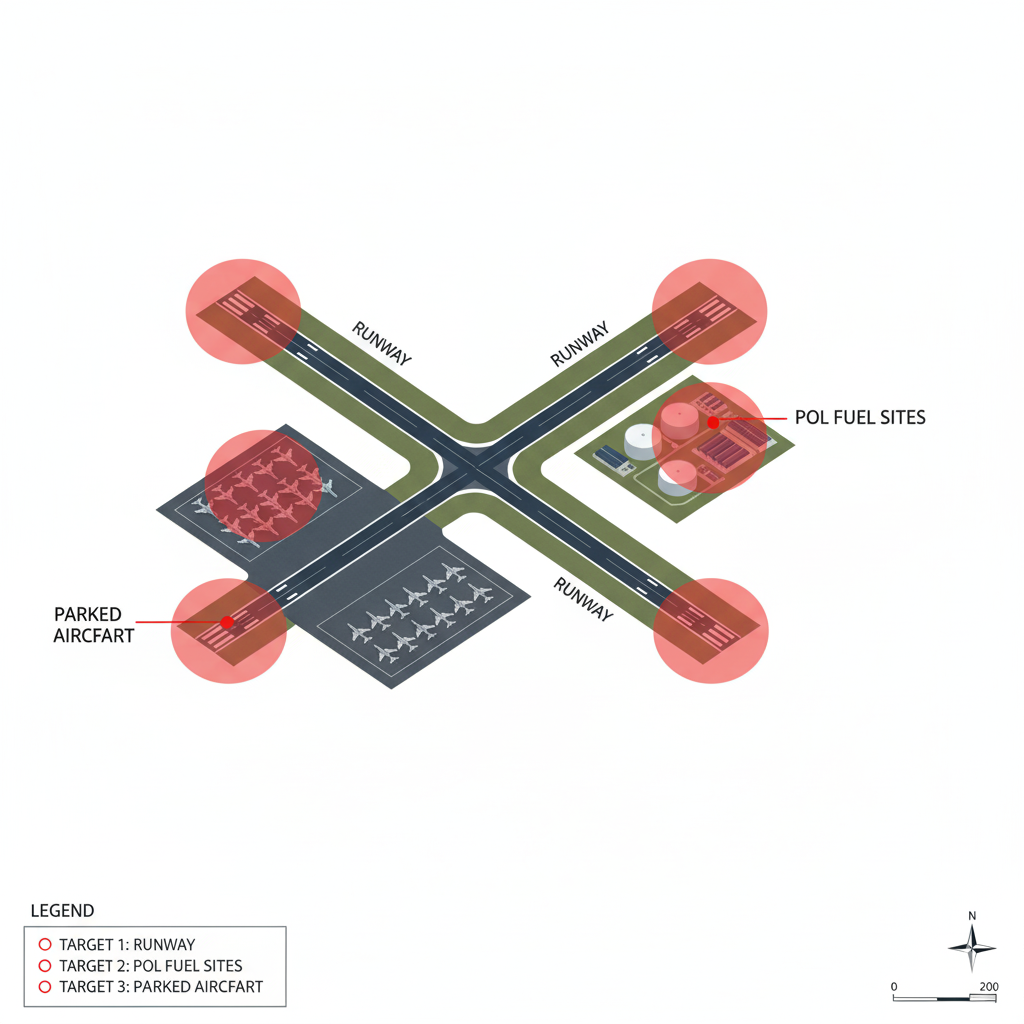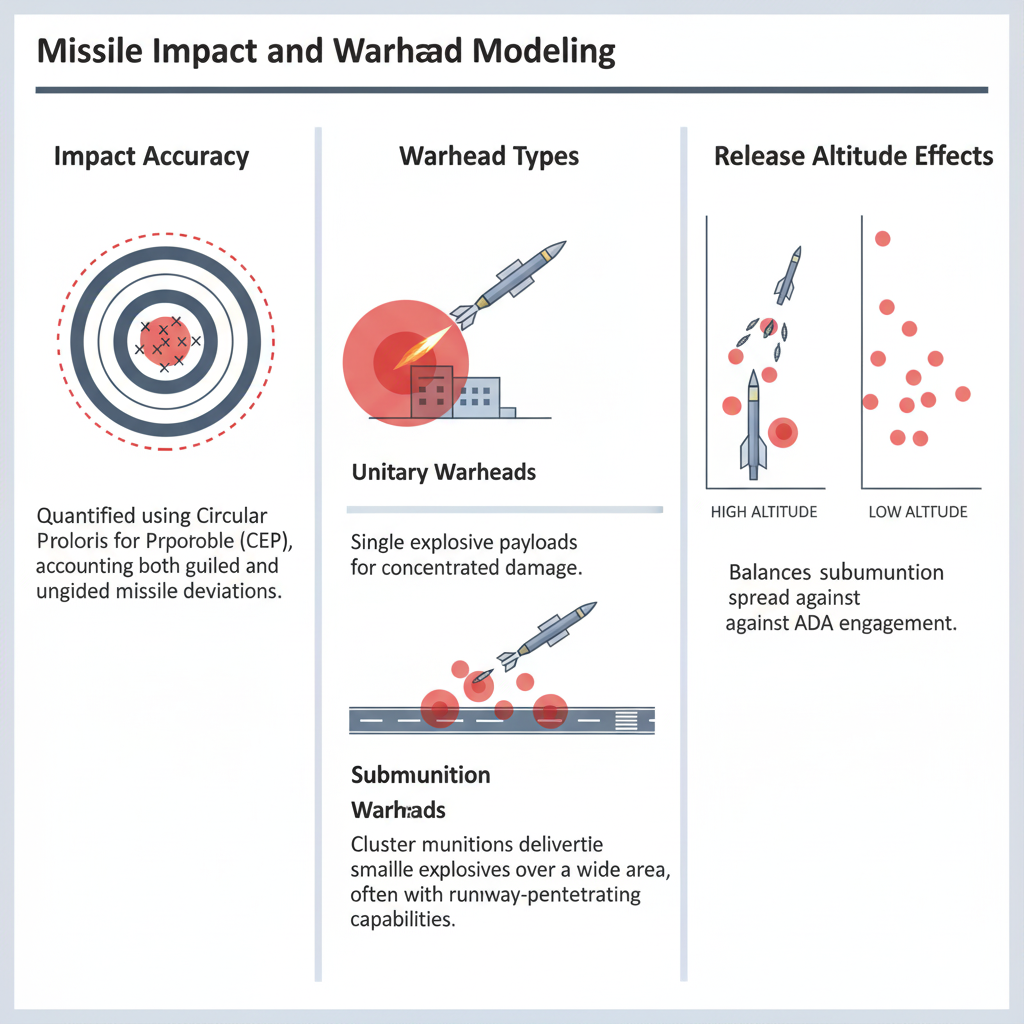Modern military operations increasingly rely on the precise coordination of missile raids to achieve strategic objectives. Theater ballistic missiles (TBMs) and cruise missiles (CMs) provide long-range strike capabilities, but optimizing their use against defended targets has become a complex problem due to the growing diversity and volume of available missile stockpiles. Traditional methods that simply maximize the number of leakers—missiles that bypass air defense artillery (ADA) systems—are no longer sufficient.
Challenges with Classical Optimization Methods
Classical optimization approaches for missile fire plans face several limitations:
- Uniformity Assumption: Historically, missile raids used only a few missiles of the same type, making damage roughly proportional to the number of leakers. Modern mixed raids break this assumption.
- Limited Damage Modeling: Most analyses focus on leakers rather than the actual damage caused by different missile types. Accuracy, lethality, and target vulnerability are not fully accounted for.
- Computational Complexity: Classical methods struggle to simulate large, heterogeneous missile raids against adaptive ADA networks in real time.
- Constraint Handling: Multi-dimensional constraints, such as warhead type, release altitude, and target criticality, are often simplified or ignored.
These limitations highlight the need for a methodology that directly optimizes fire plans based on expected damage rather than merely maximizing leakers.
Methodology: Damage-Based Multi-Objective Optimization
The proposed methodology evaluates missile fire plans by modeling the damage to airfield targets and integrating this with ADA simulations. The process involves:
Damage Effects Modeling

- Primary Targets: Airfields, including runways, fuel sites (POL points), and parked aircraft.
- Runway Targeting: Focus on reducing takeoff and landing capability.
- Fuel Sites: Interrupt aircraft operations by reducing available fuel or creating operational bottlenecks.
- Parked Aircraft: Direct destruction to permanently eliminate operational capacity, although aircraft mobility makes targeting more difficult.
Missile Impact and Warhead Modeling

- Impact Accuracy: Quantified using Circular Error Probable (CEP), accounting for both guided and unguided missile deviations.
- Warhead Types:
- Unitary Warheads: Single explosive payloads for concentrated damage.
- Submunition Warheads: Cluster munitions delivering multiple smaller explosives over a wide area, often with runway-penetrating capabilities.
- Release Altitude Effects: Balances submunition spread against ADA engagement avoidance.
Runway Damage Modeling
- Composed of submodels including missile flight propagation, penetrator flight, concrete penetration, cratering, and runway availability.
- Missile Flight Submodel: Uses 3-DOF modeling for TBMs and CMs to determine orientation and impact conditions.
- Penetrator Flight Submodel: Requires 6-DOF or modified point-mass models to account for off-axis yaw and penetration depth critical for crater modeling.
Optimization Process Steps
- Prepare input/output folders and damage simulation runs.
- Translate optimization program outputs into simulation inputs.
- Update input files for each simulation run.
- Execute simulations to generate leaker data.
- Feed leaker data into damage effects models.
- Run damage simulation and extract target damage outputs.
- Report results to the optimization program for evaluation.
- Clean up intermediate files if required.
Objective Function
The optimization seeks a multi-objective balance:
- Maximize damage across multiple targets (runways, fuel, aircraft)
- Minimize exposure to interception
- Tailor missile types, quantities, and attack parameters to achieve desired operational outcomes
Quantum-Inspired Optimization with BQP
Classical algorithms like genetic algorithms (GAs) face challenges in large-scale, high-dimensional optimization:
Key Benefits of QIO in Missile Planning
- Rapid Exploration: Evaluates multiple solutions simultaneously.
- Real-Time Adaptation: Adjusts to sudden changes, such as weather or ADA shifts.
- Energy-Efficient Allocation: Optimizes resources for extended mission duration.
- Multi-Objective Optimization: Balances multiple target effects and operational constraints.
By integrating quantum-inspired methods, fire plans can achieve:
- Superior operational effectiveness through optimized targeting and damage modeling.
- Enhanced decision-making speed for dynamic and complex raids.
- Scalability for large, heterogeneous missile raids previously intractable with classical methods.
- Improved alignment of attack parameters to achieve mission objectives beyond simple leaker counts.
This is a significant evolution in missile raid planning, moving from leaker-centric strategies to fully damage-aware, multi-objective optimization. By leveraging advanced simulation models and quantum-inspired optimization techniques, planners can now design missile fire plans that maximize operational impact while accounting for the complex dynamics of modern air defense systems.
FAQs
Why is leaker count not enough in missile planning?
Because it ignores actual damage effects on runways, fuel, and aircraft.
What makes modern missile raids harder to optimize?
Mixed missile types, adaptive defenses, and multi-target constraints.
How does damage-based modeling improve fire plans?
It evaluates real operational impact instead of just interception outcomes.
Why use quantum-inspired optimization (QIO)?
It accelerates large-scale, multi-objective planning with higher accuracy.
Can QIO adapt to dynamic mission conditions?
Yes, it adjusts plans in real time as threats and environments change.



.jpeg)

.png)
.png)




.svg)
.svg)
.svg)
.svg)